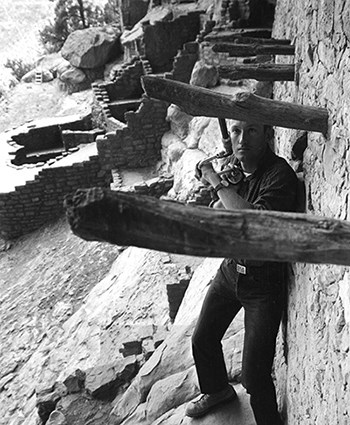

Dendrochronology (Tree-ring dating)Dendrochronology (dendro = tree, chron = time, ology = a science), or tree-ring dating, is a scientific tool tool that allows archeologists to find out when buildings were constructed, remodeled, and sometimes, abandoned. Although tree-ring dating itself is not an artifact, the wood that is being studied by archeologists are indeed, artifacts. Researchers at Mesa Verde National Park and the Laboratory of Tree-Ring Research at the University of Arizona have used dendrochronology since 1923. This research is a great tool to discover when an ancient community or structure within a community was built. This is especially useful for places like the Mesa Verde cliff dwellings, where some of the wood used in their construction have been preserved for hundreds of years. Tree RingsAs you may know, most trees grow one ring each year. The width of each ring depends on the environmental conditions in which it is grown and how much precipitation it gets each year. Since the amount of precipitation changes, some rings are wide, some narrow, and some in between. Because of this, each tree’s growth rings form a pattern over time and can be compared to tree-ring patterns of other trees. It is this pattern that has allowed researches in the southwest to create a tree-ring calendar that goes back hundreds of years. 
time it was used in construction. The Role of Dendrochrology at the ParkAt Mesa Verde, much of the wood used to construct the cliff dwellings have been sampled for tree ring dating. The most common sample is a core,** but cross sections (slices) or end cuts have also been taken. Although not all tree-ring samples produce a cutting date, many provide a date range of varying accuracy, and a few have even revealed the exact year a tree was cut. Because of the science of dendrochronology, archeologists have learned much about the Ancestral Pueblo people and their life at Mesa Verde. For example, by using tree-ring dating along with noting architectural changes and types of pottery found at a site, they have been able to:

Wood Coring 
|
Last updated: April 21, 2025
